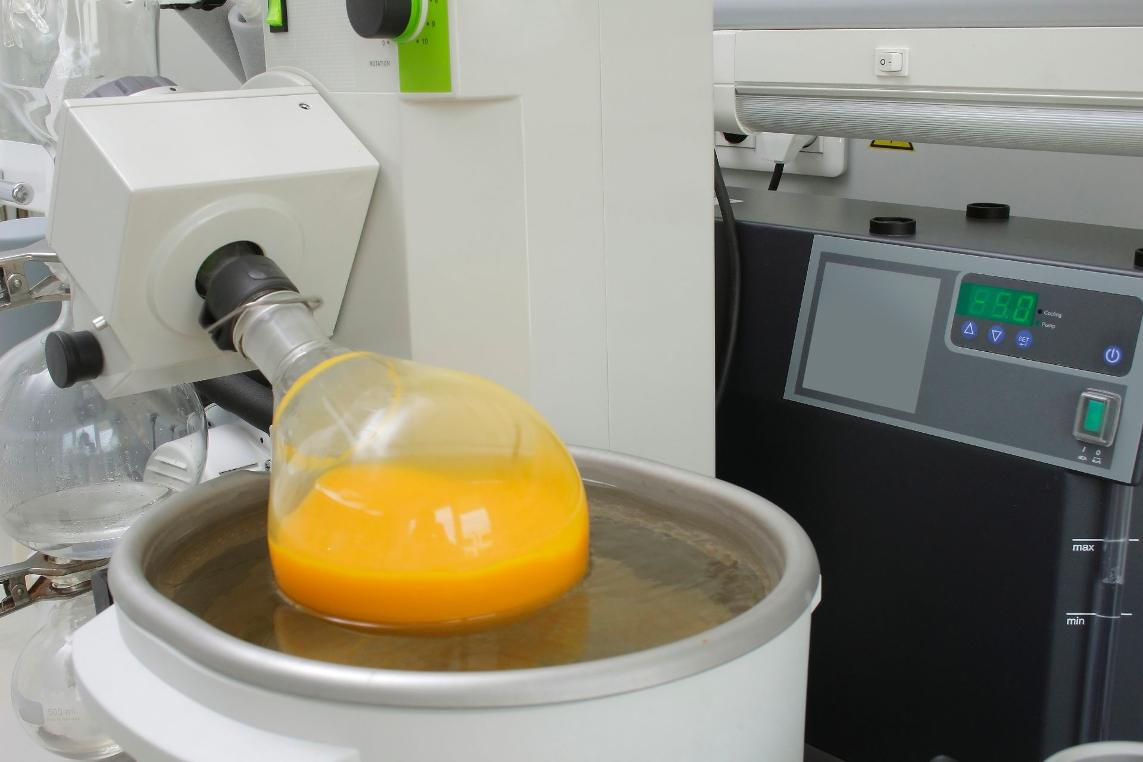Rotary evaporator distillation, often referred to simply as rotovap, is a sophisticated technique widely employed in laboratories for the efficient and gentle removal of solvents from samples. This process is particularly valuable in the chemical, pharmaceutical, and food industries, where preserving the integrity of sensitive compounds while recovering solvents is crucial. At the heart of rotary evaporator distillation is the concept of reducing pressure to lower the boiling point of solvents, allowing for their evaporation at relatively low temperatures. This method not only minimizes thermal degradation of heat-sensitive compounds but also ensures that the process is energy efficient. A rotary evaporator consists of several key components: a rotating flask, a heating bath, a condenser, and a vacuum system. The rotating flask, or evaporating flask, is where the sample is placed. As the flask rotates, the sample forms a thin film on the inner surface, significantly increasing the surface area for evaporation. This enhanced surface area accelerates the rate of evaporation while the vacuum system reduces the pressure within the apparatus. The reduced pressure decreases the boiling point of the solvent, facilitating its evaporation at lower temperatures.

The condenser then cools the vapor, causing it to condense back into a liquid, which is collected in a receiving flask. Achieving superior results with a GWSI rotary evaporator requires careful attention to several factors. First, the choice of heating bath temperature is critical. It should be optimized based on the specific boiling point of the solvent being evaporated and the thermal sensitivity of the sample. Typically, the bath temperature is set a few degrees above the boiling point of the solvent under reduced pressure. An optimal heating bath temperature ensures efficient solvent removal while protecting the sample from overheating. The vacuum level is another crucial parameter. Effective distillation relies on maintaining the right vacuum pressure, which is usually achieved using a vacuum pump. The vacuum pressure should be adjusted to match the boiling point of the solvent; too high a pressure may slow down the evaporation rate, while too low a pressure might lead to premature solvent vaporization or even sample degradation.
The rotation speed of the rotary evaporation flask also plays a significant role. A higher rotation speed increases the film formation, enhancing the evaporation rate. However, excessive rotation speed can lead to excessive foaming or bumping, which may compromise the efficiency of the process. Therefore, the rotation speed should be carefully regulated to balance optimal evaporation with operational stability. Finally, proper maintenance and calibration of the rotary evaporator are essential for achieving consistent results. Regular checks and calibration of the vacuum system, heating bath, and other components ensure that the equipment operates within its optimal parameters. Additionally, using high-quality solvents and maintaining clean apparatuses prevent contamination and ensure the purity of the recovered solvents. In summary, rotary evaporator distillation is a highly effective technique for solvent removal and sample concentration, offering superior results when applied with precision. By carefully managing heating bath temperatures, vacuum pressure, rotation speed, and maintaining equipment, researchers can achieve efficient and high-quality results in their distillation processes.